緊急情報
ホーム > 市政全般 > 平和・人権・国際交流 > 国際交流 > Chiba City English Homepage > About Chiba City
更新日:2023年9月15日
ここから本文です。
About Chiba City
- Geography
- Population
- History
- City Emblem
- Communication Mark
- City Flowering Tree
- City Flower
- City Tree
- City Bird
- Sister & Friendship Cities
Geography
Location
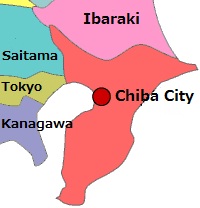
Chiba City is located at latitude 35°36’ N and longitude 140°7’ E, roughly in the center of Chiba Prefecture and approximately 40km from Japan’s capital, Tokyo.
As the starting point for highways , JR and private rail lines, as well as the center of the information and telecommunications networks within the prefecture, Chiba City is in a strategic position befitting the prefectural capital.
Composition & Area
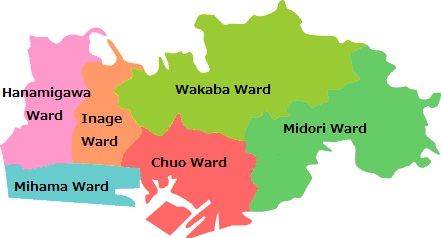
Chiba City consists of 6 wards (Chuo Ward, Hanamigawa Ward, Inage Ward, Wakaba Ward and Midori Ward) and has an area of 272.08 square kilometers.
The climate is temperate, with an average yearly temperature of 16.3°C and annual rainfall of 1637mm in 2009.
Chiba City’s landscape consists of the lush Shimosa Plateau, with a part of the city located on Tokyo Bay. The city is blessed with a rich natural environment of greenery, the ocean, a temperate climate and fertile soil.
Population
As of the 1st of September 2023, Chiba City has a population of 979,142 residents in 465,073 households.
For updated statistics, population data is released on the 15th of each month on the Statistics Division page (Japanese only).
History
People have been residing in Chiba City since the early Jomon period and the city was formed when Tsuneshige Chiba built a residence in Inohanadai in 1126.
Chiba City’s birth as a modern city was in 1873, when the two prefectures of Kisarazu and Inba merged to form Chiba Prefecture. The prefectural office was established in Chibacho, causing the city to become the center for politics, economics and culture, which then developed into a key part of the transportation network.
On January 1st 1921, the municipal government was officially established and Chibacho became Chiba City. At the time, the city had an area of 15km2and a population of 33,000. Many hospitals, schools such as teachers’ colleges and medical schools, railroad regiments and military facilities such as an army infantry school were established. The city flourished as a city of medicine and the military. The city continued to develop steadily until roughly 70%of the downtown area was destroyed in fire caused by two air raids in 1945, resulting in the loss of many precious lives and important city facilities.
However, the citizens rose to the challenge of recovery and began projects to rebuild the city after the war. Aiming for a rebirth as a modern industrial city, the city invited major industries to the coastal area and built Chiba Port, transforming the city from one of consumption to production.
With the development of the coastal area, construction of large-scale housing facilities, the creation of inland industrial complexes, mergers with nearby towns and land reclamation, the city expanded and developed into a comfortable living environment, which was focused on balanced community development. On April 1st 1992, Chiba City became Japan’s twelfth government ordinance designated city.
Before then, the city promised to further citizens’ full-scale efforts towards developing a city with rich nature and beautiful watersides, declaring the city as a ‘City of Nature and Watersides’ on October 20th 1984.Additionally, on February 28th 1989, the city declared itself as a ‘City of Peace’, in the hopes of promoting lasting peace in the world. Finally, Chiba City was officially announced as a government ordinance-designated city on October 18th, which was then established as Citizens’ Day, with commemorative events starting in 1996 and taking place each year.
Nowadays, the city is continuing to exhibit remarkable growth and development as a diverse metropolis that plays a major role in the Tokyo Metropolitan Area, as well as an international information city that is open to the world.
City Emblem
 (Made official on May 8th 1921)
(Made official on May 8th 1921)
Chiba City is named after its founder, whose moon and star coat of arms is now the city's official emblem. In conjunction with the founder’s coat of arms, the emblem also contains the first of two characters used when writing ‘Chiba’. It was declared the official city emblem at its ceremonial founding in 1921.
Communication Mark
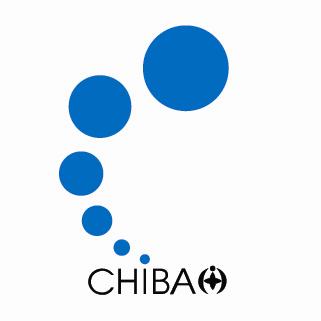 (Made official on December 1st 1991)
(Made official on December 1st 1991)
The six circles that dramatically project outward in an arc are representative of Chiba City’s six wards, symbolizing its people and resources, as well as the active flow and exchange of information that takes place within the City. This mark also stands for Chiba City’s new image as a growing place for advanced information technology.
The City's Flowering Tree: Oleander
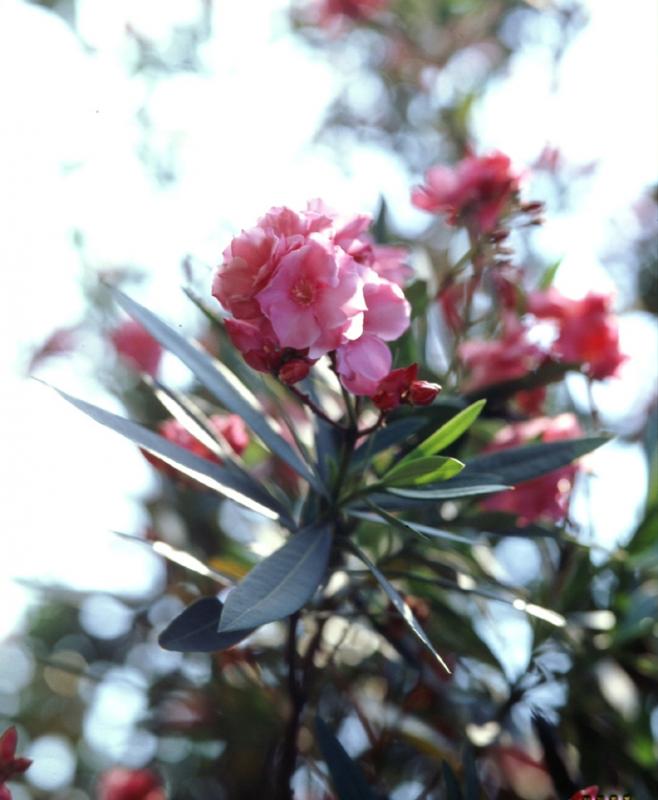 (Established in January 1970/Evergreen shrub of the Apocynaceae family)
(Established in January 1970/Evergreen shrub of the Apocynaceae family)
The oleander is a tree indigenous to India which bears beautiful red and white flowers that blossom in the summer. The tree is called ‘kyochikuto’ in Chinese due to its narrow leaves and flowers, which resemble those of a peach tree. The Japanese name is also based on this similarity.
The City's Flower: Oga Lotus
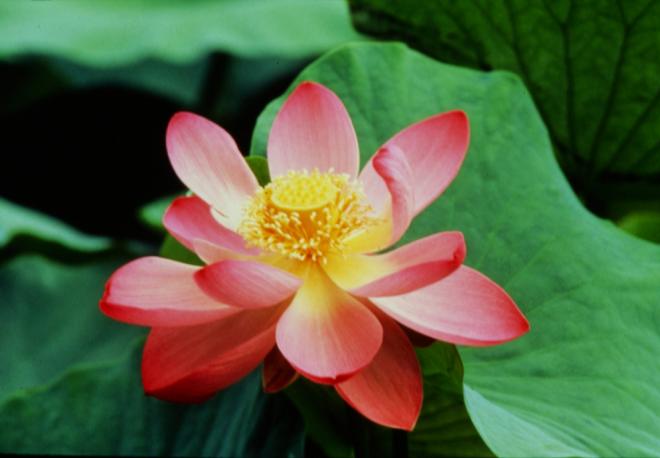 (Established April 29th 1993/Perennial of the genus Nelumbo)
(Established April 29th 1993/Perennial of the genus Nelumbo)
The Oga lotus is an ancient variety of lotus that was germinated and cultivated from seeds excavated at an archaeological site on the Hanamigawa River by the late Dr. Ichiro Oga. As a source of pride and an archaeological wonder containing the mysteries of the ancient world, the Oga Lotus became a symbol of Chiba City and was also designated as a natural treasure by Chiba Prefecture in 1954.
Flowering period: Late June - July
The City's Tree: Japanese Zelkova
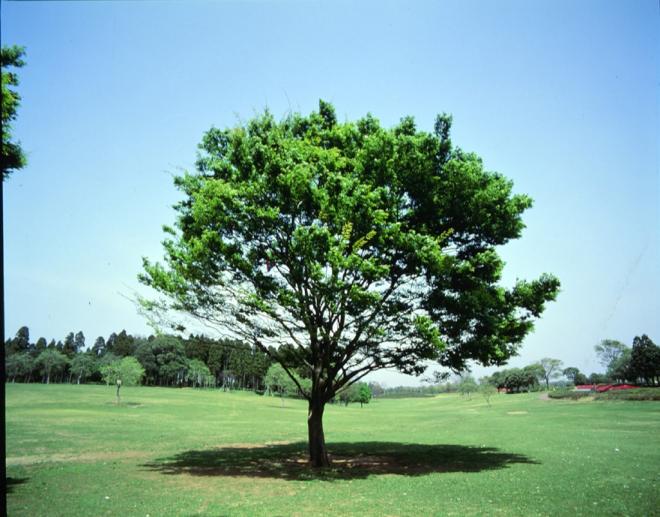 (Established April 29th 1993/Deciduous tree of the Elmaceous family)
(Established April 29th 1993/Deciduous tree of the Elmaceous family)
With its thick, broad trunk and upward-spreading treetop that resembling a broom, the attractive and magnificent Japanese Zelkova is the most common tree in the city and has long been a part of people’s everyday lives.
The City's Bird: Little Tern
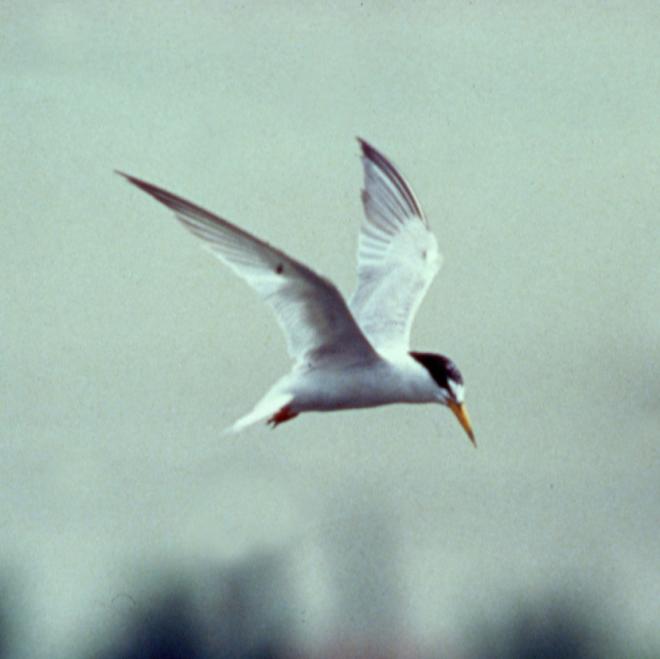 (Established April 29th 1993/Family Laridae and genus Charadriiformes)
(Established April 29th 1993/Family Laridae and genus Charadriiformes)
The little tern is a migrating species of bird that nests along the seashore from spring until fall. It can be seen diving along the seashore in search of food. The little tern is a type of gull and is considered a rare species.
Sister & Friendship Cities
Chiba City has seven sister and friendship cities. You can learn more about them here.
このページの情報発信元
より良いウェブサイトにするためにみなさまのご意見をお聞かせください
